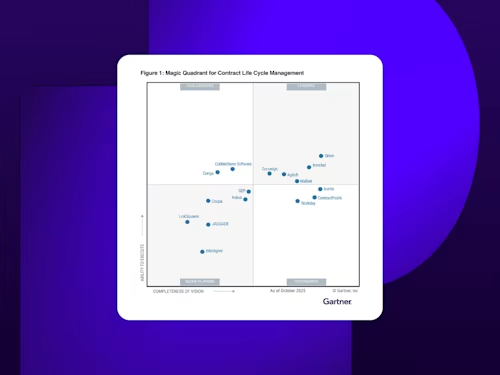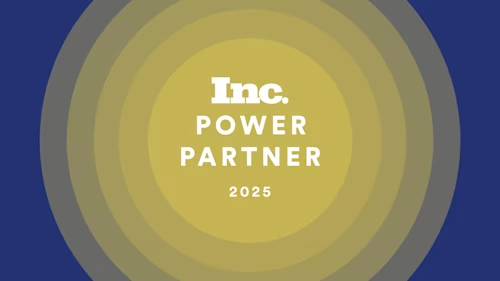
How AI Is Changing the Customer Experience Landscape
We sat down with Gainsight CEO Nick Mehta to discuss why the customer journey is so important today and how AI is changing the future of customer experience.

The internet brought sweeping changes to expectations around customer experience. Businesses that were disappointed or frustrated with their software providers and other vendors could now easily find alternatives. The downstream result: companies were forced to emphasize retention with better service, support, and usability. Now, as AI transforms expectations and possibilities in customer experience once again, vendors are preparing for another watershed moment.
This raises the question: how will vendors adapt their customer experiences in the era of AI?
As the CEO of Gainsight, a customer success and product experience software company, Nick Mehta has seen AI’s impact on the field firsthand. Docusign sat down with Mehta to discuss why the customer journey is so important today, how AI is changing the future of customer experience, and what brands can do to capitalize on this pivotal moment.
Customer experience is the differentiator
At a time when switching costs are low, vendors must deliver an exceptional experience to retain their customers. But investing in customer experience isn’t only necessary because it prevents customers from moving elsewhere—it’s also a deciding factor in initial purchasing decisions.
“In a lot of categories, the technology is no longer that differentiated,” said Mehta. “The thing that truly sets companies apart is the experience.” Whether it’s sharing best practices with customers or connecting them with other users of the product, companies need to show prospective buyers the value they offer beyond technology.
According to Mehta, these changes, which are already quite prevalent in B2C products, are now moving their way through B2B sectors. “In B2C, it’s already happened,” said Mehta. “With Uber, instead of buying a car, you have a rideshare experience. If you don’t have a great experience, you can go to Lyft or Waymo next time. It became so easy to switch in the consumer world, and that’s what’s happening in B2B.”
Mehta advises B2B companies to differentiate their offerings through personalized, digital experiences. At Gainsight, a customer-facing portal leverages AI to answer customers’ questions with extreme speed. Should customers need further assistance, the portal also offers customer training options and access to a robust online community. “The idea that I can go to one place, type in a question, and get the answer without clicking around to five websites—that’s awesome,” says Mehta.
The key, notes Mehta, is to provide exceptional digital experiences while avoiding frustrating ones.“Most people will prefer a great digital experience over waiting on hold to talk to a human,” says Mehta. “But no one wants a bad digital experience. We’ve all used the crappy chatbots on the bottom of 90% of consumer websites. Nobody wants that.”
Aligning pre-sales expectations and onboarding reality
Mehta believes nearly every team can play a role in improving the customer experience, from support to marketing. That said, employees who work with sales, including pre-sales experts and sales engineers, are critical because they set customer expectations. Onboarding or professional services teams are also crucial, as they’re tasked with positioning the customer to achieve the goals set out during the sales process.
However, when expectations are not properly set, the customer experience can quickly go awry between sales and onboarding. For instance, all too often, a customer will arrive at the onboarding stage only to realize that the product doesn’t work quite the way they expected due to a misalignment in the sales process.
“In onboarding, someone’s on a call with the customer, and the customer says, ‘Oh wait, I didn’t think it worked this way,’” says Mehta. “You get the customer into this suboptimal state from day one, and the customer begrudgingly moves forward, but they didn’t get what they wanted and no one knows about it. Then, at some point, a few other things become suboptimal and a straw breaks the camel’s back.”
By connecting sales and onboarding teams early on, customer expectations can be properly set. Mehta adds the caveat that sometimes the buyer simply doesn’t know what questions to ask their sales rep and, therefore, doesn’t realize there’s an issue until they actually start using the product. In these instances, “when issues are identified, it’s important to quickly and proactively handle them,” Meta says.
AI is best combined with a human perspective
As many brands test out the array of new AI tools on the market, some are struggling to automate customer experience tasks while retaining the human touch customers desire. Gainsight uses a human-first AI playbook to ensure their team uses AI effectively. “Human-first is our company mission statement,” says Mehta. “It basically means: how do you run a business in a way where you can remember everyone around you is a human being first? We decided to use that term around AI.”
The result was six best practices—three internal practices for employees and three external practices to better support customers—that serve as guideposts so companies can effectively use AI to enhance their culture and service.

Internal team best practices
Eliminate blind spots: Often, there are areas of every business’s service where customers have been unhappy since the beginning. Businesses can use AI to mine customer communications and find latent frustration that employees may have missed.
Remove grunt work to make time for what matters: Most employees spend copious time manually entering notes and data. By automating this work with AI, businesses can free their teams to focus on providing excellent customer experiences.
Turn every teammate into your best teammate: Employees have valuable knowledge about their own customers, but might not have insight into the circumstances of other employees’ customers. Companies can use generative AI to pool this information, creating a shared database of best practices and customer successes.
Customer-facing best practices
Make self-service not suck: AI-powered chatbots can leave customers feeling frustrated and unheard. By providing AI with context about the customer, businesses can create more personalized, helpful experiences.
Transform novices into gurus: While the average customer might not take an hours-long training class on a software they use at work, businesses can still find ways to make their experience better. For instance, in-app training tips and modules can provide even novice users with pointers as they use the product.
Help customers find their work besties: Sometimes, customers need to connect with each other to get the most value out of a product, but they don’t always know who to reach out to. AI can streamline the process by connecting customers with similar use cases and business profiles.
Prepare for the future of customer experience
To meet the demand for efficient digital experiences, Mehta expects more businesses to build customer experiences into their products. “By offering automated services like support within the product, companies avoid having to constantly hire and train employees, and instead set themselves up to scale," said Mehta. "Long-term,the product is the biggest lever and more product teams are collaborating on this journey."
According to Mehta, the customer experience landscape will continue to be disrupted by AI. The customer experience most companies offer today tends to blend some digital experiences with a lot of human interaction. While many companies rely on tools like generative AI to improve their experiences, Mehta sees AI playing an even more central role over time.
"Will the customer experience a few years from now actually just be generative AI?” asks Mehta. “Rather than navigating to a support or community webpage, will we do everything in the chatbot of a product? That sounds like science fiction, but science is happening very quickly nowadays. It's no longer far in the future. It's right around the corner."
Forms and agreements are an essential part of countless customer processes and transactions. If yours are creating friction and leading to poor customer experiences, it may be time for a change. Learn how you can embed modern, seamless digital agreement experiences into your workflows to delight customers and boost loyalty. Explore Docusign IAM for CX on our website.
Related posts
Docusign IAM is the agreement platform your business needs



